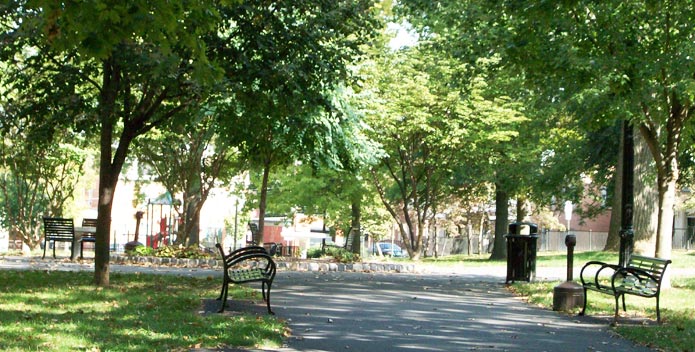The following first appeared in, The Sentinel.
When the former International Automotive Components factory site along Fairground Avenue in Carlisle is redeveloped into commercial and residential properties, a hotel, and a restaurant, the Carlisle Urban Stormwater Park will protect the vulnerable LeTort Spring Run from polluted runoff.
A grant by the federal National Fish and Wildlife Foundation (NFWF) and matching local funds totaling nearly $1.2 million will allow the Borough of Carlisle to install measures to stem flooding and reduce the amount of pollution going downstream.
The site is now owned by Carlisle Auto Industries, sister company of car show operator Carlisle Events. NFWF funding to the borough will also allow for removal of 5,200 square feet of impervious surface on the property.
The stormwater park will capture, store, and slowly release stormwater after it is filtered and absorbed by soil and plants, before it reaches the LeTort. The LeTort feeds into the Conodoguinet Creek, which flows into the Susquehanna River, and ultimately the Chesapeake Bay.
Financial and technical assistance from NFWF supports cost-effective and creative solutions that clean and restore polluted rivers and streams in Pennsylvania and the Bay states. Investments come through NFWF's Chesapeake Bay Stewardship Fund.
It was recently announced that NFWF will award 44 grants from the Stewardship Fund for 2017, to Bay states totaling $12.6 million. The investments will be matched by almost $18 million in contributions, bringing the total on-the-ground impact to about $30 million.
In 2016, 39 NFWF grants totaled $10 million, to leverage $13 million in contributions, bringing the total on-the-ground impact to about $23 million.
Innovative Nutrient and Sediment Reduction grants from the Stewardship Fund support projects that reduce polluted runoff. The Fund's Small Watershed Grants support projects that promote community-based efforts to protect and restore the natural resources of the Bay and its rivers and streams.
Projects in Pennsylvania the benefit from NFWF grants are too numerous to list. Here are a few more:
- In Lancaster County, American Rivers, will remove Krady Mill Dam. It is a deteriorating safety hazard and the first barrier on Chiques Creek, a tributary of the Susquehanna River. Removal will also benefit migratory and resident fish.
- In York County, Wrightsville Borough will reduce polluted runoff by adding a large stormwater retention basin within Riverfront Park on the Lower Susquehanna. Also, with NFWF funding, the county's idea to create a stormwater authority will advance from the feasibility stage to development of an actual business plan.
- With NFWF support, more than 600 feet of eroded stream channel was stabilized and restored on a tributary of Paxton Creek, in a watershed that drains much of the greater Harrisburg metropolitan area.
- In the Juniata River Basin, the Chesapeake Bay Foundation will work with 10-15 farmers to install measures that reduce polluted runoff risks to three streams and add incentives for habitat improvements like forested buffers.
- The Adams County Conservation District received NFWF funding in the past to monitor various watersheds and develop 75 plans for reducing runoff.
- In Franklin County, the Conococheague Creek Riparian Buffer Campaign increased tree plantings along streams and rivers in rural and urban areas and encouraged conversion of turf to trees on residential and commercial properties.
As Pennsylvania considers yet another budget that does not adequately fund pollution reduction efforts, federal partnerships like those with NFWF and the Chesapeake Bay Program are as important as ever.
The spending bill approved by federal House Appropriations Committee cuts support for the Bay Program from $73 million to $60 million. Hopefully that funding will be restored. Pennsylvania cannot afford to fall further behind in meeting its clean water commitments.
Roughly 19,000 miles of Commonwealth rivers and streams are harmed by pollution. NFWF grants help clean them up, improve farm economies, and protect human health and welfare.

Issues in this Post
Runoff Pollution Algal Blooms Dead Zones Runoff Pollution Water Quality CBF in Pennsylvania



